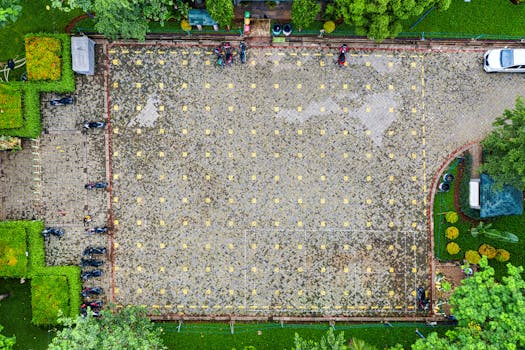15-Minute Cities: Urban Planning Prioritizing Walkability and Mixed-Use Spaces
If there is one lesson that the COVID-19 pandemic has taught us, it is the value of walkable and accessible cities. With lockdowns and strict restrictions on travel, people have been forced to stay within their immediate neighborhoods. This has highlighted the importance of creating cities that prioritize walkability and mixed-use spaces. Enter the concept of 15-minute cities, a model of urban planning that strives to provide everything a resident needs within a 15-minute walk or bike ride. In this article, we will explore the concept of 15-minute cities and how they are redefining the future of urban planning.
What are 15-Minute Cities?
15-minute cities are compact, self-sufficient, and multi-functional neighborhoods where residents can meet most of their needs within a 15-minute walk or bike ride. This means having access to groceries, healthcare, education, work, and leisure activities all within a short distance. The idea behind this concept is to reduce the dependency on cars, promote a healthier lifestyle, and create more sustainable cities.
The Need for Walkable Cities
In many cities around the world, the automobile has been the primary mode of transportation for decades. This has resulted in sprawling cities and car-centric neighborhoods, making it difficult for people to move around without a car. As a result, cities have become more congested, polluted, and less livable. With the rise of climate change, there is a need for cities to become more sustainable and reduce their carbon footprint. This is where 15-minute cities come in.
Promoting Healthier Lifestyles
The compact and walkable nature of 15-minute cities encourages people to walk or bike, leading to a more active lifestyle. This, in turn, can reduce the risk of obesity, heart disease, and other health problems associated with a sedentary lifestyle. Additionally, with less dependency on cars, there will be a reduction in air and noise pollution, creating a healthier environment for the residents.
Boosting the Local Economy
By creating mixed-use spaces within a neighborhood, 15-minute cities can boost the local economy. Local businesses such as restaurants, cafes, and retail stores can thrive as they have a captive audience within the community. This also reduces the need for people to commute to other areas for their daily needs, keeping the money circulating within the local economy.
The Components of 15-Minute Cities
Creating a 15-minute city requires careful planning and an understanding of the needs of the community. The following are some key components of a 15-minute city:
Mixed-Use Spaces
Mixed-use spaces are the foundation of 15-minute cities. These are areas that combine various functions such as residential, commercial, and recreational spaces, all within a compact area. This encourages people to live, work, and play within the same neighborhood, reducing the need for long commutes.
Public Transportation
While 15-minute cities aim to reduce the dependency on cars, they still recognize the need for public transportation. Well-connected and accessible public transportation can help residents reach areas that are not within a 15-minute walking distance. This can also provide access to people with mobility issues, older adults, and those who cannot walk or bike long distances.
Improved Infrastructure
In order for a neighborhood to function effectively as a 15-minute city, it needs to have well-maintained and safe infrastructure. This includes sidewalks, bike lanes, street lighting, and public spaces. These improvements not only encourage walking and biking but also create a more inviting and livable environment for the residents.
Community Engagement
A successful 15-minute city relies heavily on community engagement and involvement. It is vital to listen to the needs and feedback of the residents to create a neighborhood that works for everyone. Engaging the community in urban planning can also foster a sense of ownership and pride in their neighborhood.
Examples of 15-Minute Cities
While the concept of 15-minute cities is relatively new, there are already some successful examples around the world. One such example is the city of Paris, which launched its 15-minute city initiative in 2020. The city aims to create a greener, healthier, and more sustainable urban environment by prioritizing walking, biking, and public transportation. Other cities such as Melbourne, Australia, and Copenhagen, Denmark, are also following suit and implementing similar plans.
Conclusion
15-minute cities are not just a mere utopian dream; they are a necessary step towards creating more livable and sustainable cities. By prioritizing walkability and mixed-use spaces, these cities can reduce car dependency, promote healthier lifestyles, and boost the local economy. As cities continue to grow and face challenges such as climate change and rapid urbanization, the concept of 15-minute cities provides a promising solution for a more livable future.










